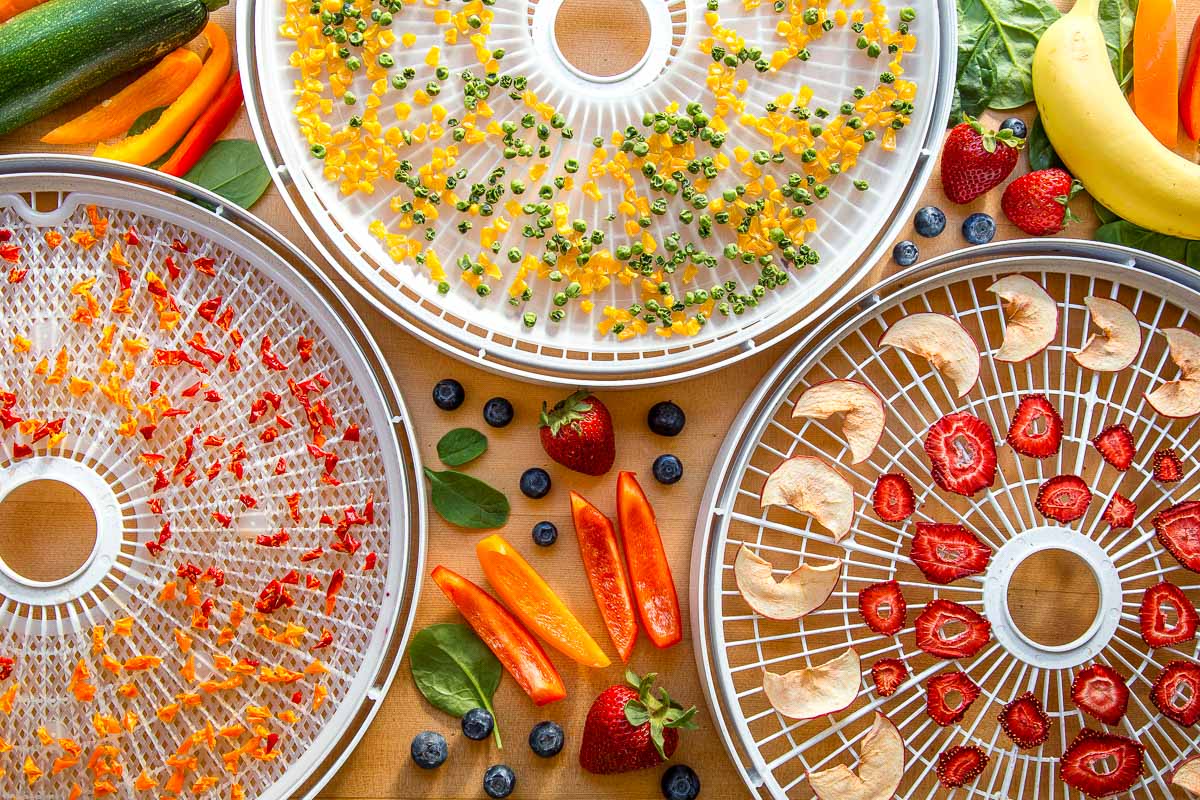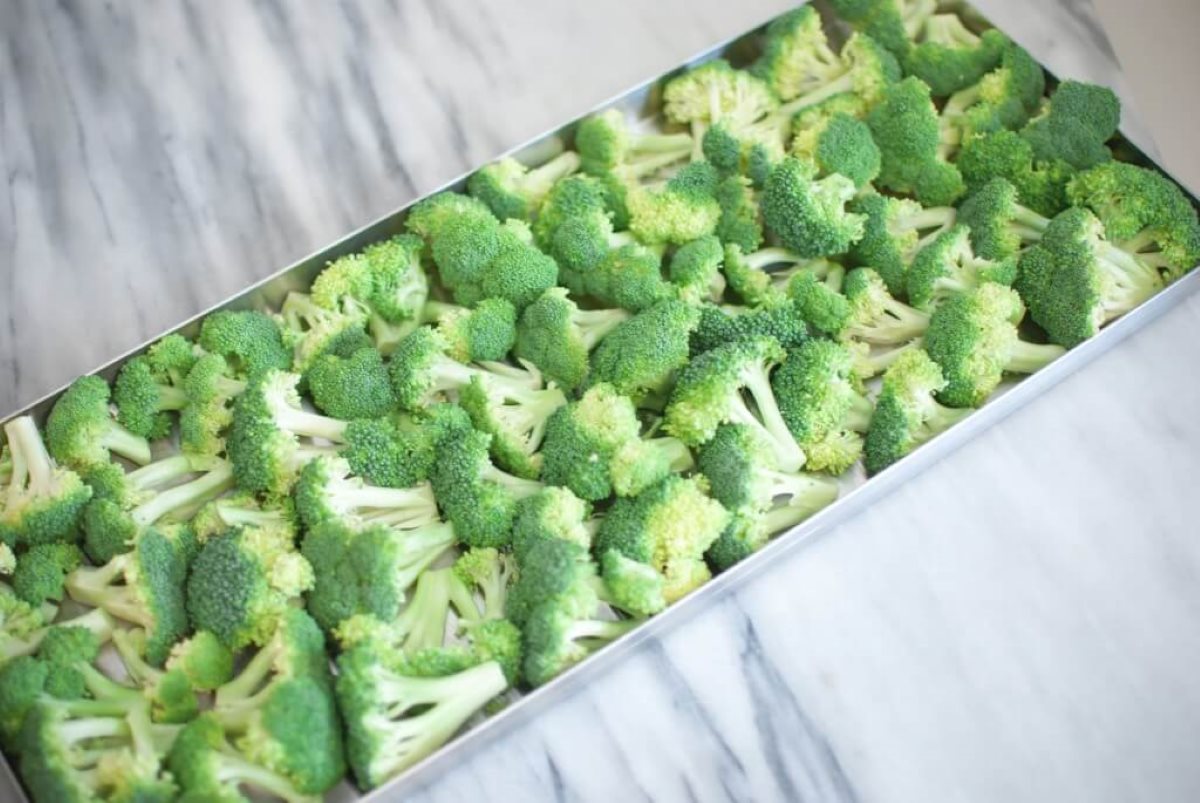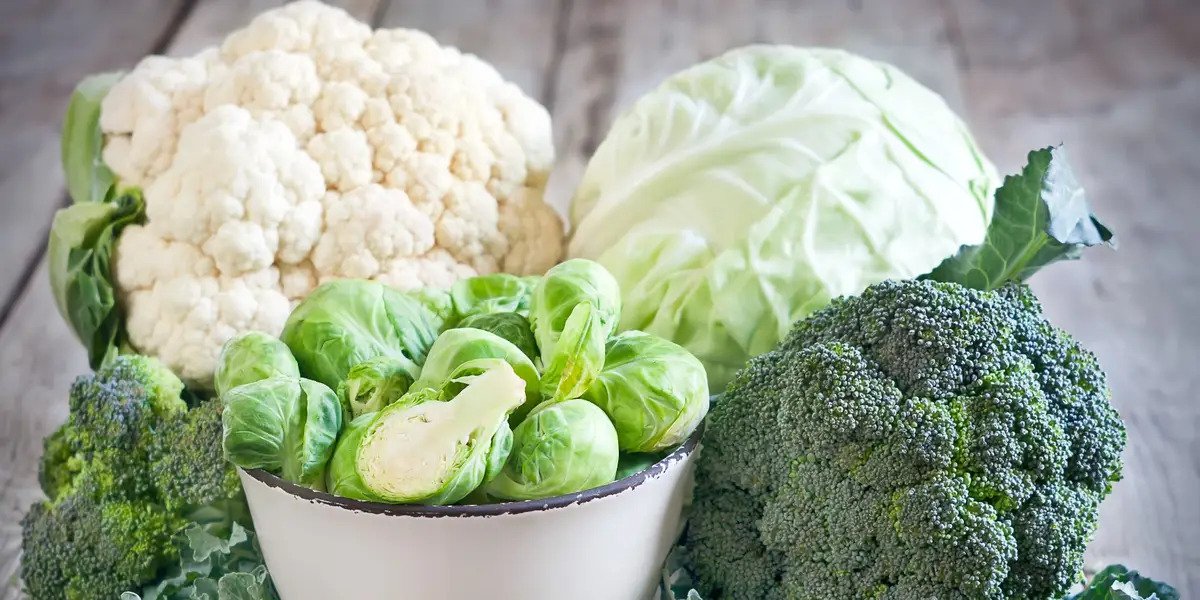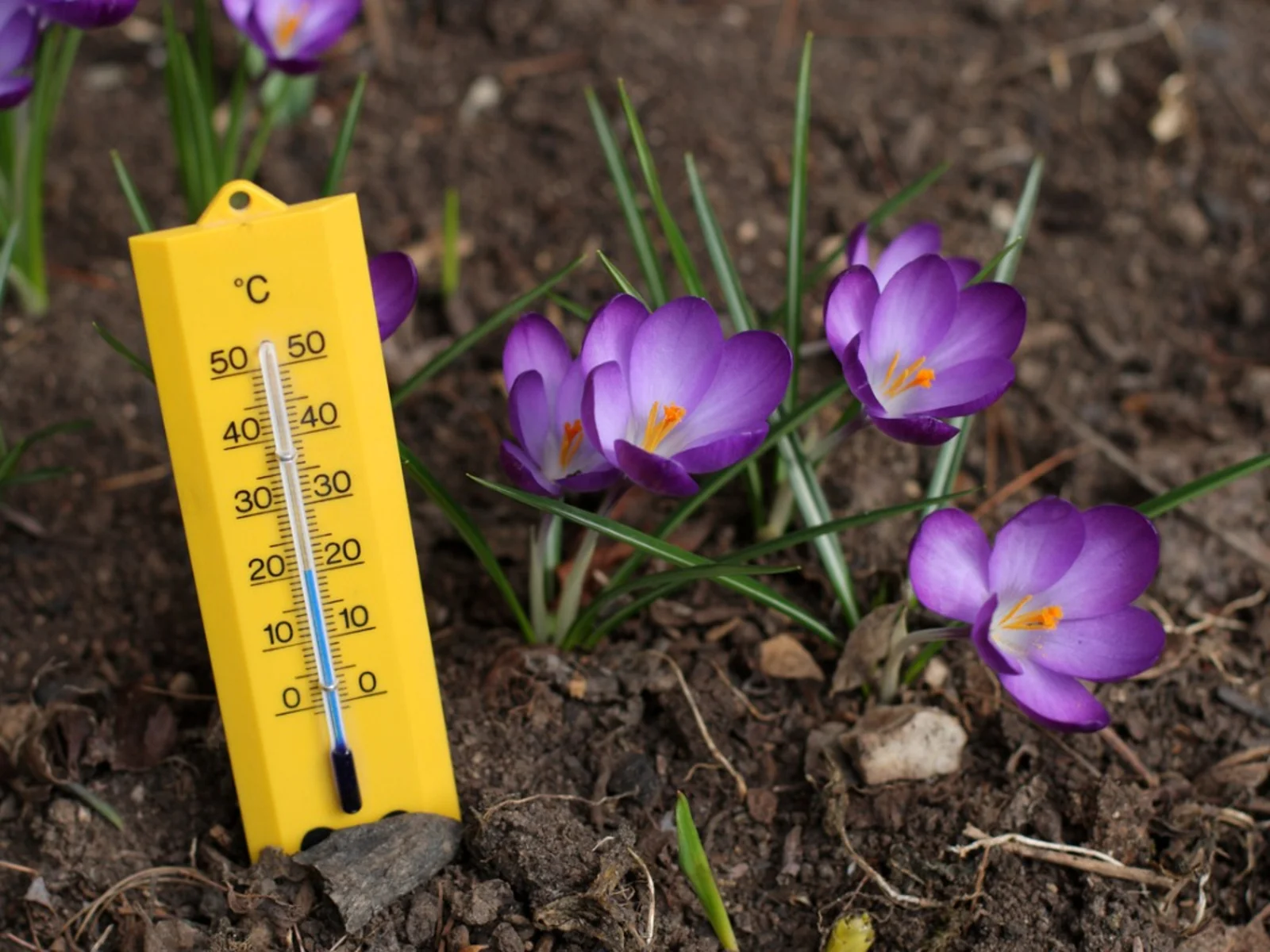Home>Gardening News and Trends>Latest News>What Vegetables Can You Freeze


Latest News
What Vegetables Can You Freeze
Modified: January 22, 2024
Find out the latest news on what vegetables can you freeze, including tips and tricks for preserving your favorite produce. Discover the best methods for freezing vegetables at home.
(Many of the links in this article redirect to a specific reviewed product. Your purchase of these products through affiliate links helps to generate commission for Chicagolandgardening.com, at no extra cost. Learn more)
Table of Contents
Introduction
Welcome to the wonderful world of freezing vegetables! Whether you’re an avid gardener with an overabundance of produce or simply looking to make your grocery budget go further, freezing vegetables is a convenient and cost-effective way to preserve their freshness and flavor.
Freezing vegetables offers numerous benefits, including extending their shelf life, retaining their nutritional value, and ensuring that you always have a healthy option on hand for meals. Plus, it allows you to take advantage of seasonal deals or harvests and enjoy your favorite vegetables all year round.
In this article, we will explore the types of vegetables that can be successfully frozen, the guidelines for preparing and freezing them, and the best methods for storing and using frozen vegetables. Along the way, we’ll also share some valuable tips and tricks to help you get the most out of your frozen vegetable stash. So, let’s dive in and discover the world of freezer-friendly vegetables!
Benefits of Freezing Vegetables
Freezing vegetables offers a multitude of benefits for both convenience and health-conscious individuals. Here are some of the top advantages of freezing vegetables:
- Extended Shelf Life: By freezing vegetables, you can significantly extend their shelf life. This means less food waste and more savings for your wallet.
- Retained Nutritional Value: Freezing can help preserve the essential nutrients present in vegetables. Vitamins and minerals, such as vitamin C and potassium, are retained, ensuring you still get the nutritional benefits when consuming them later.
- Freshness and Flavor Preservation: Properly frozen vegetables can maintain their freshness and flavor for months, allowing you to enjoy the taste of just-harvested produce at any time of the year.
- Convenience: Having a stock of frozen vegetables readily available in your freezer means you always have a quick and easy option for adding nutritious elements to your meals, especially during busy times.
- Cost savings: Buying fresh vegetables in bulk or when they are in season and freezing them can be more cost-effective compared to purchasing pre-packaged frozen vegetables from the grocery store.
- Meal Planning: Freezing vegetables allows you to plan meals in advance and have a variety of options at your disposal for creating well-balanced dishes throughout the week.
With the multitude of benefits freezing vegetables provides, it’s no wonder that more and more people are turning to this preservation method to make the most of their fresh produce.
Types of Vegetables That Can Be Frozen
When it comes to freezing vegetables, not all varieties are created equal. Some vegetables freeze better than others and maintain their texture and flavor after thawing. Here are some common types of vegetables that can be successfully frozen:
- Leafy Greens: Vegetables like spinach, kale, and Swiss chard can be blanched and frozen for later use in soups, stir-fries, or smoothies.
- Root Vegetables: Carrots, beets, turnips, and radishes can be peeled, sliced, blanched, and then frozen. They can be added to stews, roasted, or used in casseroles after thawing.
- Broccoli and Cauliflower: These cruciferous vegetables can be blanched and frozen in florets. They are great for adding to stir-fries, casseroles, and pasta dishes.
- Peppers: Bell peppers can be sliced or diced and frozen. They are perfect for adding to omelets, fajitas, or pasta sauces.
- Beans and Peas: Green beans, snap peas, and snow peas can be blanched and frozen. They make a delicious addition to stir-fries or as a side dish.
- Corn: Fresh corn kernels can be blanched and frozen. They can be used in soups, salsas, or as a tasty side dish.
- Tomatoes: While not suitable for eating fresh after thawing, tomatoes can be frozen whole or as sauce for use in cooked dishes like stews, sauces, and soups.
It’s important to note that some vegetables, like cucumbers, lettuce, and summer squash, do not freeze well due to their high water content and delicate texture. These vegetables are best enjoyed fresh or pickled.
Guidelines for Freezing Vegetables
When it comes to freezing vegetables, following proper guidelines ensures that you maintain the quality and safety of the produce. Here are some important guidelines to keep in mind:
- Freshness: Choose vegetables that are fresh and at their peak ripeness for the best results. Avoid using vegetables that are limp, bruised, or overripe.
- Preparation: Wash the vegetables thoroughly to remove any dirt or debris. Trim and cut the vegetables into desired sizes, such as slices, strips, or florets.
- Blanching: Blanching is a crucial step that helps in preserving the texture, color, and nutritional value of the vegetables. It involves briefly boiling the vegetables and then plunging them into ice water to stop the cooking process.
- Packaging: Use freezer-safe containers or bags to package the blanched vegetables. Remove as much air as possible to prevent freezer burn. Label the containers or bags with the name of the vegetable and the date of freezing.
- Freezer Temperature: Set your freezer temperature to 0°F or below to ensure proper freezing and storage of the vegetables. Maintaining a consistent temperature is crucial for maintaining quality.
- Freeze in Small Portions: Freeze vegetables in smaller portions to make it easier to thaw and use only what you need, instead of defrosting a large batch.
- Storage Duration: Different vegetables have different recommended storage durations. Generally, most frozen vegetables can be stored for 8-12 months. Make a note of the storage duration for each vegetable.
Following these guidelines will help you successfully freeze vegetables and preserve their quality for months to come. Remember, proper techniques and storage are key to ensuring your frozen vegetables maintain their flavor and nutritional value.
Preparing Vegetables for Freezing
Properly preparing vegetables before freezing is essential to maintain their quality and maximize their shelf life. Here are some steps to follow when preparing vegetables for freezing:
- Wash the vegetables: Start by washing the vegetables thoroughly under running water to remove any dirt, debris, or pesticides. Use a brush if needed, and pay extra attention to leafy greens and root vegetables.
- Trim and cut: Trim off any stems, roots, or damaged parts of the vegetables. Then, cut them into desired sizes and shapes, such as slices, cubes, or florets. This step helps ensure even cooking and ease of portioning later.
- Blanching: Blanching is an important step to preserve the quality of vegetables. It involves briefly boiling the vegetables in hot water and then quickly cooling them down in ice water. Blanching helps to deactivate enzymes that contribute to loss of flavor, color, and nutrient quality. Follow specific blanching times for each vegetable to achieve optimal results.
- Draining: After blanching, drain the vegetables well to remove excess moisture. Excess moisture can lead to the formation of ice crystals, which can degrade the texture and flavor of the vegetables during freezing and thawing.
- Packaging: Pack the blanched and drained vegetables into freezer-safe containers or bags. Make sure to leave some headspace to allow for expansion during freezing. Squeeze out as much air as possible from bags to reduce the risk of freezer burn.
- Labeling: It’s crucial to label each container or bag with the name of the vegetable and the date of freezing. This ensures you can easily identify the contents and use them in a timely manner.
Properly preparing vegetables before freezing helps to lock in their freshness, flavor, and nutritional value. Remember to have everything ready and organized before you start the blanching process, as timing is essential to achieve the best results.
Methods for Freezing Vegetables
There are different methods you can choose from when it comes to freezing vegetables. The method you select depends on various factors, such as the type of vegetable and your personal preference. Here are some common methods for freezing vegetables:
- Freezing in Containers: One of the most straightforward methods is to freeze vegetables in freezer-safe containers. After blanching and draining the vegetables, pack them into containers, leaving some headspace for expansion. Seal the containers tightly and place them in the freezer. This method is ideal for vegetables that may get easily damaged or crushed in bags.
- Freezing in Bags: Another popular method is to freeze vegetables in airtight freezer bags. Pack the blanched and drained vegetables into the bags, remove as much air as possible, and seal them tightly. Lay the bags flat on a baking sheet to prevent them from sticking together and place them in the freezer. This method is suitable for vegetables that can withstand pressure without getting damaged.
- Flash Freezing: Flash freezing involves spreading the prepared vegetables in a single layer on a baking sheet and placing it in the freezer. Once the vegetables are frozen solid, transfer them to freezer bags or containers. Flash freezing helps to prevent the vegetables from clumping together, making it easier to separate and use portions as needed.
- Pre-freezing: This method involves partially freezing the vegetables before packing them into containers or bags. Spread the blanched and drained vegetables on a baking sheet and place them in the freezer until they are firm but not completely frozen. Then, transfer the partially frozen vegetables into containers or bags, seal them tightly, and return them to the freezer. Pre-freezing helps to prevent the vegetables from sticking together or forming large ice crystals.
Each freezing method has its advantages, and the choice depends on your preferences and the type of vegetables you are freezing. Regardless of the method you choose, ensure that the packaging is airtight and well-labeled so that you can easily identify and use the vegetables later.
Storing Frozen Vegetables
Proper storage of frozen vegetables is crucial to maintain their quality over time. Here are some guidelines to follow when storing frozen vegetables:
- Containers or Bags: Whether you choose to store your frozen vegetables in containers or bags, make sure they are airtight and free from any leaks or cracks. This ensures that the vegetables are protected from exposure to air and moisture, which can lead to freezer burn and degradation of quality.
- Labeling: It’s important to label each container or bag with the name of the vegetable and the date of freezing. This helps you keep track of the contents and ensure that you use the oldest ones first.
- Organize and Stack: When storing frozen vegetables, organize them in a systematic manner. Stack containers or stack bags in an orderly manner to maximize space in the freezer and make it easier to access the ones you need.
- Temperature: Set your freezer temperature to 0°F (-18°C) or below to maintain the quality of the frozen vegetables. Lower temperatures help retain the flavor, texture, and nutritional value of the vegetables.
- Storage Duration: Different vegetables have different recommended storage durations. Generally, most frozen vegetables can be stored for 8-12 months. However, for optimal flavor and quality, it’s best to use them within 3-6 months. Keep track of the storage duration for each vegetable and prioritize using the older ones first.
- Thawing: When you’re ready to use the frozen vegetables, it’s best to thaw them in the refrigerator overnight. Slow thawing helps maintain texture and flavor. However, if you’re in a hurry, you can also thaw them under cool running water or use them directly in cooked dishes without thawing.
By following these storage guidelines, you can ensure that your frozen vegetables remain fresh, flavorful, and nutritious for an extended period. Proper storage not only preserves the quality but also allows for easy access and efficient use of the vegetables when needed.
Defrosting and Using Frozen Vegetables
When it comes to using frozen vegetables, proper defrosting techniques can help maintain their texture and flavor. Here are some methods for defrosting and using frozen vegetables:
- Refrigerator Thawing: The recommended method for defrosting frozen vegetables is to transfer them from the freezer to the refrigerator and allow them to thaw overnight. This slow thawing process helps preserve the texture and flavor of the vegetables. Once thawed, use them within a day or two for best results.
- Water Bath Thawing: If you need to quickly defrost the vegetables, you can place the sealed container or bag in a bowl of cool water. Make sure the vegetables are in a leak-proof package to prevent water from entering. Change the water every 30 minutes until the vegetables are thawed. Once thawed, use them immediately.
- Cooking Frozen Vegetables: Some recipes allow for using frozen vegetables directly without thawing. You can add them directly to soups, stews, stir-fries, or other cooked dishes. Cooking frozen vegetables may take slightly longer than fresh ones, so adjust the cooking time accordingly.
- Freezing Vegetables in Portions: To make it easier to use only what you need, consider freezing vegetables in individual portion sizes. This allows you to thaw and use only the amount required for a specific recipe, preventing waste.
- Creative Uses: Frozen vegetables can be used in a variety of dishes, such as stir-fries, casseroles, pasta dishes, soups, and omelets. They can also be blended into smoothies or used as toppings for pizzas and salads.
- Avoid Refreezing: Refreezing previously frozen vegetables is not recommended, as it can affect the quality and safety of the produce. Once the vegetables are thawed, it’s best to use them within a day or two.
By following these defrosting and usage tips, you can make the most out of your frozen vegetables and enjoy their freshness and flavor in a variety of dishes. Whether you thaw them overnight in the refrigerator or use them directly in cooked dishes, frozen vegetables provide a convenient and nutritious option for meals.
Tips and Tricks for Freezing Vegetables
When it comes to freezing vegetables, there are some additional tips and tricks that can help you achieve the best results. Here are some handy suggestions to make the most out of your frozen vegetables:
- Quality is Key: Start with fresh, high-quality vegetables for optimal results. Choose vegetables at their peak ripeness and freeze them as soon as possible after harvesting or purchasing.
- Proper Blanching: Follow recommended blanching times for each vegetable to ensure they are properly cooked and retain their flavor and texture. Under-blanching can lead to texture loss, while over-blanching can cause nutrient loss.
- Flash Freeze Leafy Greens: Leafy greens like spinach and kale tend to clump together when frozen. To prevent this, spread the blanched greens in a single layer on a baking sheet and flash freeze them before transferring to bags or containers.
- Remove Excess Air: When packaging vegetables for freezing, try to remove as much air as possible from bags or containers. This helps reduce the risk of freezer burn and preserves the quality of the vegetables.
- Proper Portioning: Freeze vegetables in portion sizes that you would typically use in recipes. This makes it easier to thaw and use the exact amount needed without having to defrost an entire batch.
- Label and Date: Always label the containers or bags with the name of the vegetable and the date of freezing. This ensures you can easily identify and use the oldest vegetables first.
- Use Freezer-Safe Containers: If using containers, make sure they are freezer-safe and sturdy enough to prevent crushing or leakage. Glass containers or rigid plastic containers work well for freezing vegetables.
- Consider Vacuum Sealing: Vacuum sealing vegetables can help prolong their shelf life and prevent freezer burn. This method removes all the air, reducing the risk of ice crystals forming.
- Rotate and Use Older Stock: Periodically rotate your stock of frozen vegetables, using the older ones first to ensure they are used before any potential loss of quality.
- Experiment with Blends: Try creating your own vegetable blends by combining different vegetables before freezing. This can make meal preparation more convenient and add variety to your dishes.
By following these tips and tricks, you can maintain the quality of your frozen vegetables and make the most out of your freezer stash. From proper blanching to smart packaging, these techniques will help ensure that your frozen vegetables remain delicious, nutritious, and ready to use whenever you need them.
Conclusion
Freezing vegetables is an excellent way to preserve their freshness, flavor, and nutritional value. By following the guidelines for preparing, blanching, packaging, and storing, you can ensure that your frozen vegetables maintain their quality for an extended period.
Not only does freezing vegetables help reduce food waste and save money, but it also allows you to enjoy your favorite vegetables year-round, even when they are out of season or not readily available. With a freezer stocked with a variety of frozen vegetables, you have the convenience of healthy options on hand for quick and nutritious meals.
Remember to choose fresh and ripe vegetables, properly wash and prepare them, and follow the recommended blanching times to retain their taste and texture. Whether you opt for freezing in containers, bags, or flash freezing on a baking sheet, always ensure airtight packaging to prevent freezer burn.
When it’s time to use your frozen vegetables, defrost them properly to preserve their quality. Thawing in the refrigerator overnight is the recommended method, but you can also cook them directly from frozen for convenience.
By implementing the tips and tricks shared in this article, such as portioning, labeling, and experimenting with vegetable blends, you can make the most out of your frozen vegetables and enhance your culinary creations.
So, let your freezer be your ally in maintaining a healthy lifestyle and reducing food waste. Embrace the convenience of frozen vegetables and enjoy the benefits of having a stockpile of nutritious options at your fingertips. Happy freezing!










